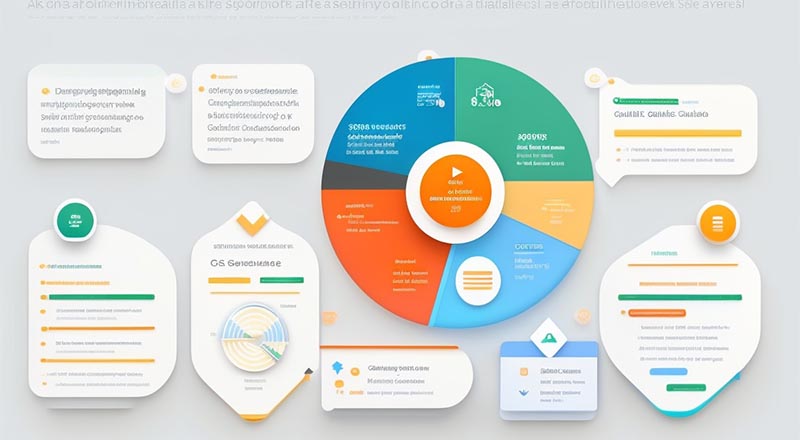Tips

How to Create a 'Parallel' Nonprofit & Reap the Rewards
There are many sound financial reasons why companies like Coca-Cola, Ikea and Shell, to name but a few, have parallel foundations and trusts. One of those reasons is to benefit from grants and subsidies only nonprofit status entities are eligible for. The Google Ad Grant is a prime example of how you can increase awareness and even explode your email list effectively for free by doing 'Social Good' and sharing content with the public at large. We will explain how that works from a legal perspective and how your business can get in on the action with the big boys and thousands of other for-profit organisations.

Parallel-Hybrid Nonprofit Structure
A non-profit organisation's main goal is to make money. Instead, non-profit organisations' overarching goal is to help or serve their target audience. Therefore, the primary distinction between for-profit and nonprofit organisations is found in their respective missions. A for-profit company, as its name suggests, exists to produce profit, which is achieved through increasing revenues over costs.
When establishing a non-profit, drafters typically compose a mission or purpose statement that outlines the organisation's overall goals and how those goals will be realised, including ‘but not limited to’ raising revenue.
The majority of non-profits rely on conventional fundraising techniques, but many also rely on for-profit companies to assist them in generating the funding they so desperately need. It is challenging to implement such a strategy without endangering the non-profit organisation's ability to claim tax exemption under US Federal Tax Law, but there are legal ways to achieve this that generally fall under two categories.

Creation of a subsidiary, hybrid or ‘parallel’ non-profit company
Collaboration with for-profit companies is one way non-profits might generate cash unrelated to their objective.
While the for-profit subsidiary engages in unrelated business operations, such as delivering educational content (in the same field or industry), creating a parallel non-profit entity to complement a for-profit entity (or vice versa), can enhance a business reputation for doing social good and becoming recognised as an industry leader, which naturally generates more indirect business for the for-profit division.
Having a non-profit subsidiary has a number of additional business benefits in addition to assisting the non-profit in maintaining its tax-exempt status, such as the capacity to provide staff with various compensation plans.
Regardless of whether the subsidiary is a Limited Liability Corporation (”LLC”), the fact that the LLC is a pass-through tax entity brings about a variety of issues. A registered non-profit or registered charity are the most popular organisational structures for a for-profit company's subsidiary.
The requirement to retain the subsidiary as a separate entity is a crucial factor to take into account while founding a non-profit subsidiary. The directors of each entity, for instance, may share some members, but they must remain distinct from one another and hold separate meetings.

For-profit and Non-profit ‘Parallelisation’
’Parallelisation’ of a non-profit organisation and a for-profit organisation is an option.
The contracts should be arm's length transactions paying market rates for services and goods in order for the second way to be successful.
Hybrid Businesses
Many new hybrid organisations with the ability to pursue both profit and non-profit goals have emerged in recent years. Although neither word is true nor widely used, one might think of them as non-profit for-profit or for-profit non-profit organisations.
Organisations with a for-profit corporation with a non-profit subsidiary or division are examples of hybrid organisations.
The ‘Low-profit Limited Liability Company or ‘L3C’ as it is commonly known, is set up similarly to a Limited Liability Company (”LLC”) but is required to serve a charitable purpose even if it may potentially make money. Furthermore, an L3C can draw funding from private foundations and is recognised as a program-related investment.
A non-profit organisation that has been granted tax-exempt status by the US Internal Revenue Service ("IRS") is subject to a number of regulations that must be adhered to in order for the organisation to maintain its tax-exempt status.
As a result, even if a non-profit organisation may engage in unrelated trade or business operations that result in cash, the non-profit faces the risk of losing its tax-exempt status if these activities become too successful or result in an excessive amount of income.

Income that is More Than Expenses vs. Profit
The distributions that each type of organisation is allowed to make distinguishes them further from for-profit enterprises. For example, a for-profit business that is profitable can pay dividends to its shareholders out of its profits. However, a non-profit organisation is limited in the ways it can utilise this income. It may only reinvest the funds in the services it offers, support other non-profit organisations, or, in the case of a foundation, invest the funds in investments tied to certain programs.
A program-related investment, or "PRI," is one whose main goal is the attainment of one or more of the foundation's exempt purposes, according to the IRS. Although a PRI could unintentionally turn a profit, it cannot have profit generation as one of its main goals. Additionally, a PRI cannot be used to influence legislation or take part in an election campaign.
Finally, a foundation must fulfil its yearly 5% payout requirement in order to maintain its tax-exempt status, and PRIs are a significant means to do so.

Conclusion
Through careful and strict compliance with nonprofit guidelines, For-Profit businesses are completely legitimately benefit from benefits the big boys enjoy which are otherwise out of reach for regular companies.
For further information on how to set up a parallel non-profit or to get started on a hybrid structure, outline your business aims on our Badaboost Intake Form here and get a tailored proposal from us within 24 hours.
Related posts

How to Create a 'Parallel' Nonprofit & Reap the Rewards
There are many sound financial reasons why companies like Coca-Cola, Ikea and Shell, to name but a few, have parallel foundations and trusts. One of those reasons is to benefit from grants and subsidies only nonprofit status entities are eligible for. The Google Ad Grant is a prime example of how you can increase awareness and even explode your email list effectively for free by doing 'Social Good' and sharing content with the public at large. We will explain how that works from a legal perspective and how your business can get in on the action with the big boys and thousands of other for-profit organisations.

Parallel-Hybrid Nonprofit Structure
A non-profit organisation's main goal is to make money. Instead, non-profit organisations' overarching goal is to help or serve their target audience. Therefore, the primary distinction between for-profit and nonprofit organisations is found in their respective missions. A for-profit company, as its name suggests, exists to produce profit, which is achieved through increasing revenues over costs.
When establishing a non-profit, drafters typically compose a mission or purpose statement that outlines the organisation's overall goals and how those goals will be realised, including ‘but not limited to’ raising revenue.
The majority of non-profits rely on conventional fundraising techniques, but many also rely on for-profit companies to assist them in generating the funding they so desperately need. It is challenging to implement such a strategy without endangering the non-profit organisation's ability to claim tax exemption under US Federal Tax Law, but there are legal ways to achieve this that generally fall under two categories.

Creation of a subsidiary, hybrid or ‘parallel’ non-profit company
Collaboration with for-profit companies is one way non-profits might generate cash unrelated to their objective.
While the for-profit subsidiary engages in unrelated business operations, such as delivering educational content (in the same field or industry), creating a parallel non-profit entity to complement a for-profit entity (or vice versa), can enhance a business reputation for doing social good and becoming recognised as an industry leader, which naturally generates more indirect business for the for-profit division.
Having a non-profit subsidiary has a number of additional business benefits in addition to assisting the non-profit in maintaining its tax-exempt status, such as the capacity to provide staff with various compensation plans.
Regardless of whether the subsidiary is a Limited Liability Corporation (”LLC”), the fact that the LLC is a pass-through tax entity brings about a variety of issues. A registered non-profit or registered charity are the most popular organisational structures for a for-profit company's subsidiary.
The requirement to retain the subsidiary as a separate entity is a crucial factor to take into account while founding a non-profit subsidiary. The directors of each entity, for instance, may share some members, but they must remain distinct from one another and hold separate meetings.

For-profit and Non-profit ‘Parallelisation’
’Parallelisation’ of a non-profit organisation and a for-profit organisation is an option.
The contracts should be arm's length transactions paying market rates for services and goods in order for the second way to be successful.
Hybrid Businesses
Many new hybrid organisations with the ability to pursue both profit and non-profit goals have emerged in recent years. Although neither word is true nor widely used, one might think of them as non-profit for-profit or for-profit non-profit organisations.
Organisations with a for-profit corporation with a non-profit subsidiary or division are examples of hybrid organisations.
The ‘Low-profit Limited Liability Company or ‘L3C’ as it is commonly known, is set up similarly to a Limited Liability Company (”LLC”) but is required to serve a charitable purpose even if it may potentially make money. Furthermore, an L3C can draw funding from private foundations and is recognised as a program-related investment.
A non-profit organisation that has been granted tax-exempt status by the US Internal Revenue Service ("IRS") is subject to a number of regulations that must be adhered to in order for the organisation to maintain its tax-exempt status.
As a result, even if a non-profit organisation may engage in unrelated trade or business operations that result in cash, the non-profit faces the risk of losing its tax-exempt status if these activities become too successful or result in an excessive amount of income.

Income that is More Than Expenses vs. Profit
The distributions that each type of organisation is allowed to make distinguishes them further from for-profit enterprises. For example, a for-profit business that is profitable can pay dividends to its shareholders out of its profits. However, a non-profit organisation is limited in the ways it can utilise this income. It may only reinvest the funds in the services it offers, support other non-profit organisations, or, in the case of a foundation, invest the funds in investments tied to certain programs.
A program-related investment, or "PRI," is one whose main goal is the attainment of one or more of the foundation's exempt purposes, according to the IRS. Although a PRI could unintentionally turn a profit, it cannot have profit generation as one of its main goals. Additionally, a PRI cannot be used to influence legislation or take part in an election campaign.
Finally, a foundation must fulfil its yearly 5% payout requirement in order to maintain its tax-exempt status, and PRIs are a significant means to do so.

Conclusion
Through careful and strict compliance with nonprofit guidelines, For-Profit businesses are completely legitimately benefit from benefits the big boys enjoy which are otherwise out of reach for regular companies.
For further information on how to set up a parallel non-profit or to get started on a hybrid structure, outline your business aims on our Badaboost Intake Form here and get a tailored proposal from us within 24 hours.
Want to Create Impactful Change with Your Business?
You can achieve your business goals while making a positive social impact. We'll show you how it can work for your particular business on a free call. Apply now to partner with Badaboost ad grants, find out how to get how your $10K Google Ad Grant, create your hybrid organization and join the social entrepreneurship revolution.

©2023 Badaboost Ad Grants
All rights reserved
ARN : W922019683
3 rue Voltaire, La Garenne-Colombes 92250 France
Badaboost Ad Grants est une association française de 1901
Our mission: Secure Google Ad Grants for non-profits, build audiences and awareness through marketing campaigns, and streamline volunteer recruitment efforts.
We help nonprofits make a real impact. Our innovative and cost-effective advertising solutions align their goals with meaningful change.
Google Ads Disclaimer: This disclaimer states there is no guarantee of specific results and each person results may vary. The information on this site is not intended or implied to be a substitute for professional advice or consultation on the subject. All content, including text, graphics, images and information, contained on or available through this web site is for general information purposes only. Badaboost Ad Grants makes no representation and assumes no responsibility for the accuracy of information contained on or available through this web site, and such information is subject to change without notice. You are encouraged to confirm any information obtained from or through this web site with other sources. Badaboost Ad Grants does not recommend, endorse or make any representation about the efficacy, appropriateness or suitability of any information including sponsors’ information that may be contained on or available through this web site. Badaboost Ad Grants IS NOT RESPONSIBLE NOR LIABLE FOR ANY ADVICE OR ANY OTHER INFORMATION, SERVICES OR PRODUCTS THAT YOU OBTAIN THROUGH THIS WEB SITE.



